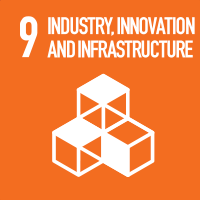Studying at the University of Verona
Here you can find information on the organisational aspects of the Programme, lecture timetables, learning activities and useful contact details for your time at the University, from enrolment to graduation.
Study Plan
This information is intended exclusively for students already enrolled in this course.If you are a new student interested in enrolling, you can find information about the course of study on the course page:
Laurea magistrale in Ingegneria e scienze informatiche - Enrollment from 2025/2026The Study Plan includes all modules, teaching and learning activities that each student will need to undertake during their time at the University.
Please select your Study Plan based on your enrollment year.
1° Year
| Modules | Credits | TAF | SSD |
|---|
4 modules among the following2° Year It will be activated in the A.Y. 2025/2026
| Modules | Credits | TAF | SSD |
|---|
| Modules | Credits | TAF | SSD |
|---|
4 modules among the following| Modules | Credits | TAF | SSD |
|---|
| Modules | Credits | TAF | SSD |
|---|
3 modules among the following2 modules among the followingLegend | Type of training activity (TTA)
TAF (Type of Educational Activity) All courses and activities are classified into different types of educational activities, indicated by a letter.
Cyber security and data protection (2024/2025)
Teaching code
4S011693
Credits
6
Language
Italian
Scientific Disciplinary Sector (SSD)
ING-INF/05 - INFORMATION PROCESSING SYSTEMS
Courses Single
Authorized
The teaching is organized as follows:
Teoria
Laboratorio
Learning objectives
This course aims to give an overview of cyber security. The course will equip students with a clear view of the current cyber security landscape considering not only technical measures and defences, but also the other subject areas that apply, including legal, management, crime, risk, social and human factors. At the end of the course, students will have the necessary knowledge and understanding of : the importance of taking a multi-disciplinary approach to cyber security, the cyber threat landscape, both in terms of recent emergent issues and those issues which recur over time, general principles and strategies that can be applied to systems to make them more robust to attack, and issues surrounding privacy, anonymity and pervasive passive monitoring.
Prerequisites and basic notions
No specific knowledge is required.
Program
1) Cyber security definition, Key cyber security properties, categories of threat actors
2) The cyber security threat landscape
- Malware attacks
- Cloud attacks
- IoT attacks
- Supply Chain Attacks
- Cyber War and Attacks to Critical Infrastructures
- Social Engineering Attacks
- Cyber Kill Chain
- MITRE Att&ck Matrix
3) Authentication and Authorization Techniques and Protocols
- User authentication: token-based authentication, biometric authentication, password based authentication
- attacks to password-based authentication systems
- Digital Identities, Single Sign On, Federated Identities, SAML, Shibboleth
- Access Control Models: DAC, RBAC, ABAC
- OAuth authorization protocol
4) Management of Cyber Risks
- Risk Management
- NIST Cyber Security Framework
- Cyber Essentials
- 10 Steps to Cyber Security
5) Privacy
- privacy definitions
- cyber attacks to privacy
- privacy enhancing technologies
- data anonymization: k-anonimity, l-diversity, t-closeness, differential privacy
- legals aspects of personal data protection
Bibliography
Didactic methods
Frontal lectures
Practical Lab exercises
Learning assessment procedures
Students will be evaluated based on
- A practical or theoretical project
- An oral examination on any of the topics taught in the course
The projects will elaborate on topics taught in the course. The topics for the projects will be proposed by the teacher, but students can also propose their own topics to the teacher. The project must be done in a group of a maximum of 2 students.
The students must prepare a written report to present the results of the project.
During the oral examination, the students will present the project to the teacher, who will ask questions about the project and any of the topics taught during the course.
At the end of the oral exam, the teacher will propose a final mark.
The date of the oral examination must be agreed with the teacher during the exam session.
Evaluation criteria
Assessment criteria are specific to the project chosen by the students. The criteria will be published by the teacher along with the projects' description.
Criteria for the composition of the final grade
The final mark will be given by the average of the mark assigned to the project and the mark assigned to the oral exam.
Exam language
Italiano

